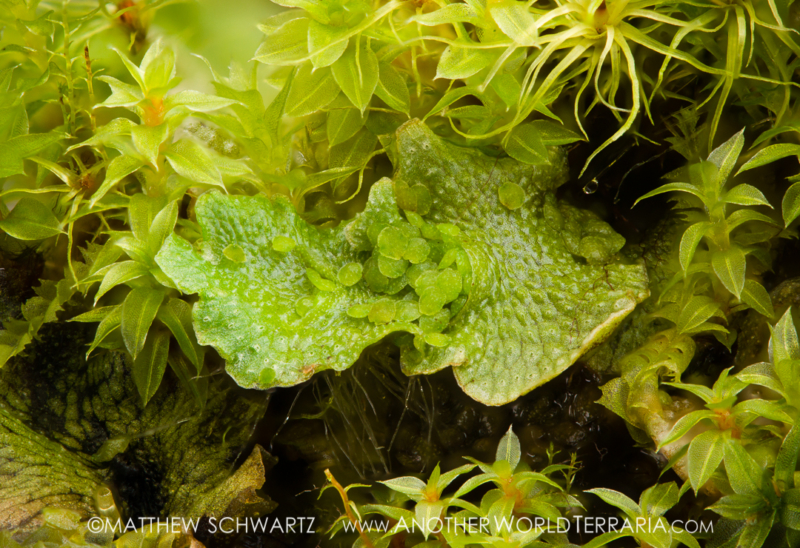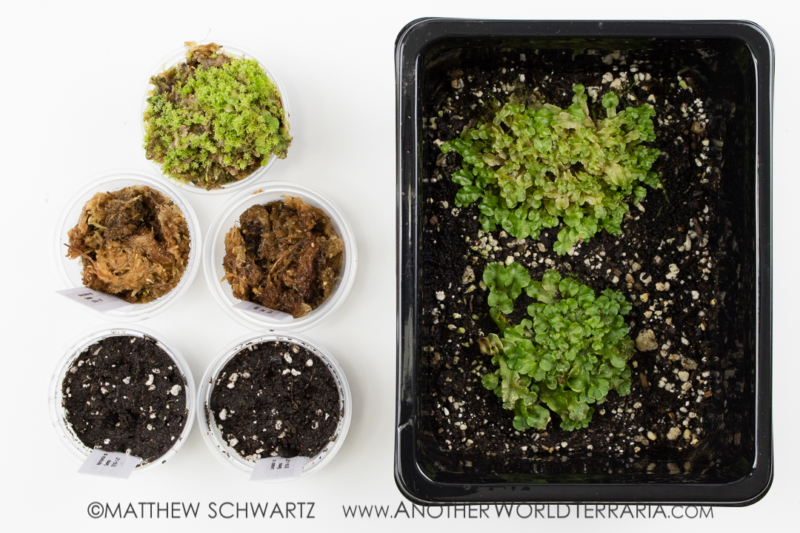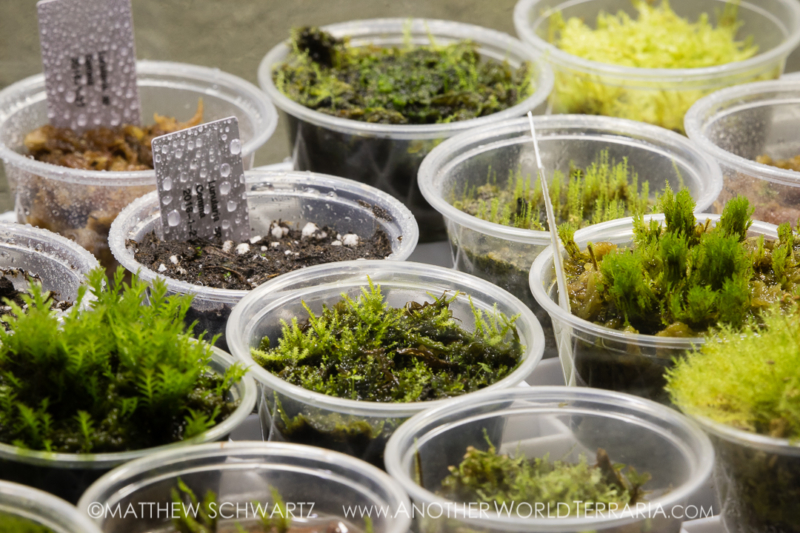In this article:
Learn what liverwort gemma are and get info about an experiment I did to grow them. I use Marchantia and Lunularia gemma, and test two different substrates (soil and sphagnum moss). Detailed instructions, a checklist of tools and materials, and other interesting info and photos.
This is part 1 of the experiment.
What is a Gemma?
A gemma is a bundle of tissue that grows on liverworts, mosses, and some other plants.
When it detaches from the parent plant, it becomes an entirely new plant. It’s a type of asexual reproduction known as fragmentation
Usually the gemma come from something called gemma cups, which are like little containers on the surface of the plant.

In nature, the gemma are dislodged from the plant by things like rainfall hitting the gemma cup, which splashes them out onto the soil and if conditions are good they germinate and grow
How to Grow Liverwort From Gemma
What You’ll Need
- Viable gemma from a liverwort
- Magnifier of some sort
- Sharp tweezers
- Sphagnum moss and potting soil
- Growing container such as a pot or tray
- Distilled water
- Waterproof labels
- Humid and moist growing conditions
- Good lighting
NOTE: It’s a good idea to make sure all of your tools and materials are clean, to avoid introducing unwanted mold, bacteria, and so on into the experiment.

Liverwort gemmae experiment
Steps:
- Prepare the substrates
- Hydrate the sphagnum moss with distilled water, then squeeze out the extra water so the moss is just moist, not waterlogged
- Moisten the potting soil with distilled water, if needed.
- Put the substrates into the growing containers
- Prepare labels for the containers. For my experiment, I added the following info on my labels:
- Liverwort genus (Marchantia, Lunularia)
- Gemmae
- The date on which the experiment was started
- Place the labels in or attached to the growing containers
- Gently and carefully gather the gemmae
- Place the gemmae atop the substrate:
- Ensure contact with the moist substrate, but do not cover or bury the gemma!
- If you are using multiple species’ gemmae, make sure you place the correct gemmae in each of the labeled containers.
- Spray the gemmae and substrate with distilled water
- Place the containers in the grow space with the correct environmental conditions
- Keep the gemmae constantly moist.
- Observe your experiment as often as desired. You may wish to take photographs, as well as write notes about your findings.

Mosses and Liverworts in a grow tank
A note about mosses and liverworts for terrariums
Mosses and liverworts are great for terrariums. In fact, they can be addicting. I really like the Exo Terra Nano for creating a small landscaped terrarium, but it has to be converted from a screen top to a glass top so you can keep the humidity up. Lucky for you, I have created a step by step tutorial video on how to do that! Check out the Nano Conversion Tutorial





